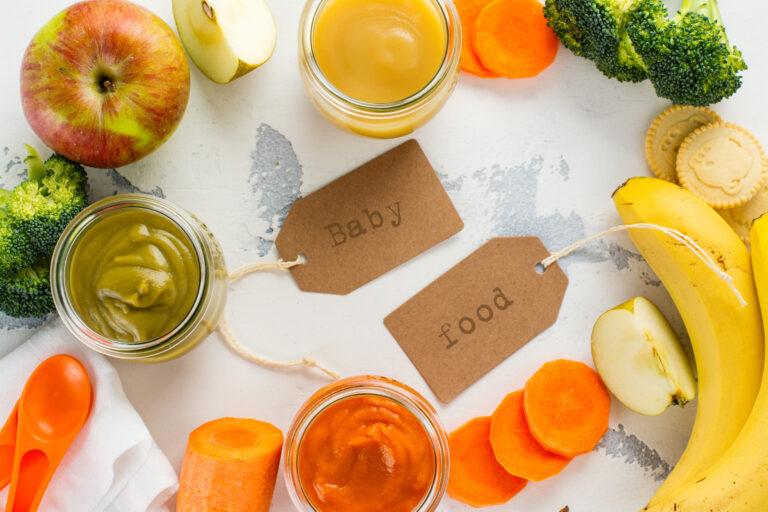A recent risk analysis of a German study (Pereira et al, 2020) showed that baby food samples from organic farming had a higher detection frequency and average concentration (54.7 μg/kg) of nickel compared to other samples. A total of 85 samples were analysed to detect the presence of nickel in premade baby foods. Nickel is widely present in premade baby foods, with 91.8% of samples showing levels above the previously calculated limit (12.5 μg/kg), with an average of 40.4 μg/kg. The average concentrations by type of baby food were, in decreasing order: fruits (50.1 μg/kg), ready meals (40.2 μg/kg), paps (33.4 μg/kg) and desserts (23.5 μg/kg).
Using the average results, the tolerable daily intake proposed by EFSA (2.8 μg/ kg b.w.) was surpassed for the 2 year old age group, with daily ingestions up to 3.1 μg /kg b.w.. This result highlight the risk promoted by the nickel present in commercial premade baby food.
There was statistical significance when comparing the organic samples with the other samples. This is surprising as the main sources of nickel should be fertilisers, pesticides and herbicides. This opens up a new perspective on products from organic farming and requires further investigation.
Short-term nickel intake causes allergic reactions in sensitive individuals, both through contact and dietary intake. Results from animal studies indicate possible reproductive and developmental effects from long-term exposure to nickel. There is currently no EU maximum residue limit value for nickel in food, only for drinking water and natural mineral water (20 µg/l).
The presence of nickel in food is generally linked to the natural geochemistry of the soil, the proximity of industrialised areas and the use of pesticides, fertilisers and herbicides. It can also accumulate significantly in sediments along catchment areas, from where it can be transferred to plants. The most common crops exposed to nickel are 'cereals and cereal-based products', 'pulses, nuts and oilseeds' and 'vegetables and vegetable products (including mushrooms)'. Another potential source is food processing and preservation, where nickel can be introduced into food, as these processes are carried out with nickel-containing steel products. No explanation for the observed data has been found and new information on the subject is needed to support the experimental data obtained.
High heavy metal content of baby food in the US
In March 2021, a congressional investigation showed that some heavy metals in baby food are much higher than the levels allowed in bottled water and other products. It is important to note that there are currently no limits on the heavy metal content of baby food in the US, the only exception being arsenic in rice cereals.
The survey tested 168 baby foods for four heavy metals: arsenic, lead, mercury and cadmium. The foods tested covered 61 brands and 13 types of food, including infant formula, biscuits, cereals and fruit juices. The values measured in the products are presented at the end of the report.
In the US, the area has been fairly under-regulated, as manufacturers have been allowed to test only ingredients that under-represent heavy metal levels in baby foods, or the vast majority of baby foods are not tested at all. The findings have led many to call for strengthening the safety regulation of baby foods.
Relevance of the case
The toxicity and impact on human health of trace amounts of heavy metals can often be a cause for concern. The most common sources of heavy metal contamination are from agricultural, industrial and mining activities. Heavy metals are mobile in the environment and can accumulate in plants. In many cases, they are directly contaminated during food processing.
All metals except mercury are known or probable human carcinogens. In addition, heavy metals can cause nervous system damage and other diseases such as kidney damage. According to one data analysis, US children aged 0-24 months have already lost more than 11 million IQ points due to exposure to arsenic and lead in food. Fifteen foods are responsible for more than half of this IQ loss, with rice-based foods accounting for 20% of this.
The contamination of phosphate fertilisers with Cd and its absorption by plants is of particular concern, as cadmium accumulates in the human body in small amounts over long periods of time after ingestion. For more information on cadmium see our other case.
A study published in 2020 found that 28 of 55 rice samples tested in the UK had arsenic levels higher than the maximum limit set for infants and young children.
In August 2021 the European Commission has set lower maximum levels for lead and cadmium in baby food, food supplements and a range of other food products.
Recently, other products, such as spices, have also raised concerns about their heavy metal content.
Although the area of baby foods in the EU is much more strictly regulated than in the US, given the results on nickel and the recent reduction of EU limits for lead and cadmium, we believe that it would be worthwhile to subject these products to more serious scrutiny. An evaluation of the available data could provide a comprehensive understanding of the domestic situation and a risk assessment could be carried out. It is also worthwhile to examine the heavy metal data from the soil monitoring (TIM) system. In addition, more attention should be paid to products with organic labels in the future.

